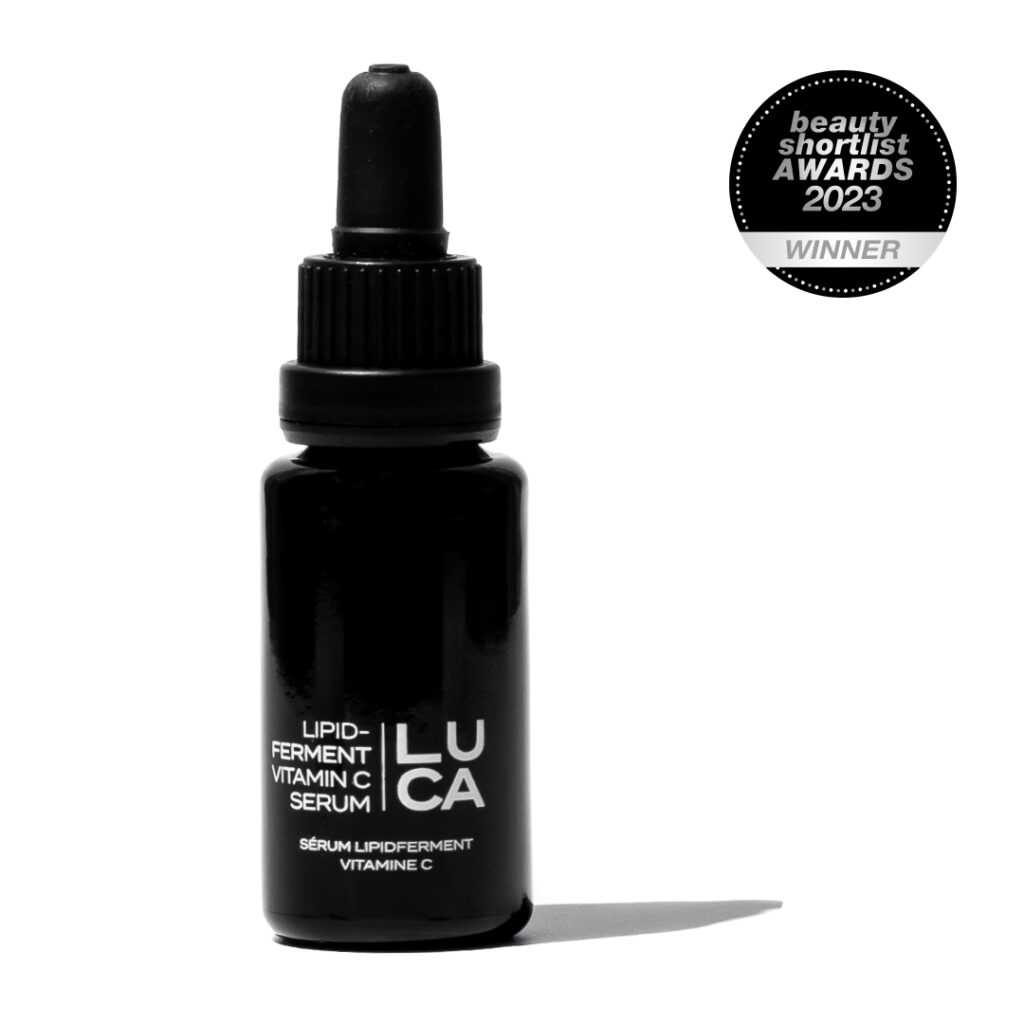
Health experts agree digital devices – smartphones, iPad laptops and computer screens can cause digital eye strain, due to the amount of time we spend looking at them. Studies have shown that too much exposure to blue light can damage light-sensitive cells in the retina. Our eyes, namely the cornea and lens, are very effective at blocking UV rays from reaching the light-sensitive retina at the back of the eyeball, less than 1% of UV radiation from the sun reaches the retina, even if you aren’t wearing sunglasses.
However, virtually all visible blue light passes through the cornea and lens and reaches the retina so it is very important to wear sunglasses to prevent damage that can lead to cataracts, snow blindness and even cancer. Can this same blue light, also known as High Energy Visible Light (HEV), affect our skin?
What is Blue Light Exposure?
Sunlight contains – Red, orange, yellow, green, and blue light rays and many shades of each of these colours, depending on the energy and wavelength of the individual rays (also known as electromagnetic radiation). This spectrum of coloured light rays creates what we call “white light” or sunlight. Rays on the red end of the visible light spectrum have longer wavelengths and, therefore, less energy.
UV Radiation covers UVA UVB and UVC – 95% of the solar radiation that reaches the earth’s surface is UVA and UVB. Most UVC is absorbed by the Ozone layer and oxygen in the atmosphere.
UVA – The most common UV ray from the sun and most dangerous, UVA can penetrate the skin down to the middle layer.
UVB – A shorter wavelength than UVA that can only penetrate the skin to the top layer. Some UVB rays are stopped by the earth’s ozone layer; it can also be stopped by treated glass.
UVC – All UVC rays from the sun are stopped by the ozone layer; therefore, the only exposure humans get to UVC is from artificial sources such as digital devices
Blue light rays – Have the shortest wavelengths along with the highest energy, and are sometimes called blue-violet or violet light. Blue light is defined as visible light ranging from 380 to 500 nanometers (nm).
Sunlight is the main source of blue light – When you are outdoors during daylight this is when you are exposed to it. Man-made indoor sources of blue light are fluorescent and LED lighting, flat-screen TVs, and digital devices. The amount of HEV light our digital devices emit is only a fraction compared to that emitted by the sun. However, the amount of time we spend using our digital devices raises cause for concern!
Good for Health – Research shows that some blue light exposure is essential for good health, high-energy visible light boosts alertness, helps memory and cognitive function and elevates mood. Ultraviolet radiation, in moderation, can have beneficial effects, by helping the body manufacture adequate amounts of vitamin D.
Light Therapy – Is used to treat the seasonal affective disorder (SAD) — a type of depression that’s related to changes in seasons, with symptoms usually beginning in the autumn and continuing through winter. The light sources for this therapy emit a bright white light that contains a significant amount of HEV blue light rays.
Circadian Rhythm – Blue light is very important in regulating circadian rhythm which is our body’s natural wakefulness and sleep cycle. Exposure to blue light during daytime hours helps maintain a healthy circadian rhythm. However too much blue light late at night can disrupt this cycle, potentially causing sleepless nights and daytime fatigue.
Infrared Saunas – Far infrared energy is able to penetrate the skin and increase circulation – helps to relieve acne, eczema, psoriasis, burns, lesions and cuts. Have also been shown to affect the autonomic nervous system putting you in the parasympathetic (rest and digest) state allowing your body to heal and offer pain relief from many forms of arthritis.
LED Devices – Can help combat Acne – Clinical Trials have demonstrated the reduction of inflammatory and non-inflammatory acne lesions using blue light in the treatment of acne vulgaris. Wavelength: 415nm.
Can Blue Light Damage Your Skin?
In short yes! – Digital devices (computers, flat-screen TVs, fluorescent light bulbs, smartphones, iPads and laptops) emanate blue light wavelength ranges from 380 nm to 500 nm. Long-term exposure to concentrated HEV can cause skin damage, including colour changes, inflammation, and weakening of the skin’s surface. Research shows blue light from electronic devices can lead to changes in your skin cells, including cell shrinkage and death. This speeds up the aging process. Even exposures as short as 60 minutes can trigger these changes.

One 2010 Study showed that although both UVA and visible light can induce pigmentation in skin types IV–VI, pigmentation induced by visible light was darker and more sustained. No pigmentation was observed in skin type II. Skin type is typically classified by the Fitzpatrick score on the predicted reaction of the skin to sunlight and ultraviolet radiation:
- Type I: Highly sensitive, always burns, never tans
- Type II: Very sun-sensitive, burns easily, tans minimally
- Type III: Sun-sensitive skin, sometimes burns, slowly tans to light brown
- Type IV: Minimally sun sensitive, burns minimally, always tans to moderate brown
- Type V: Sun-insensitive skin, rarely burns, tans well
- Type VI: Sun-insensitive, never burns, deeply pigmented
2015 study published in Oxidative Medicine and Cellular Longevity, suggested that exposure to blue light might stimulate the production of free radicals in the skin, which can accelerate the appearance of ageing.
2017 Study in the Journal of Investigative Dermatology demonstrated our skin’s melanocytes sense blue light and regulate pigmentation, responsible for hyperpigmentation induced by the shorter wavelengths of visible light.
2017 Study published in Free Radical Biology and Medicine, the results suggest that blue light contributes to skin aging similar to UVA.
How To Protect Your Skin From Blue Light Damage
Antioxidants are key to defending the skin from blue light damage, this is because they are rapidly depleted the more we are exposed to damaging blue light. By giving the skin a healthy dose of antioxidants you create a store of them so they continue to work to reduce skin damage.
- Apply – Blue light shields to the screens on your devices
- Switching on – The ‘night mode’ settings on your devices can help limit the impact of blue light
- Wear – Blue Light blocking glasses
- Topical Application – Specific Blue Light protective active Ingredients such as Marine Bamboo
- Wear – Polarized sunglasses which are specifically designed to block out blue light, for all outside light exposure to prevent long-term damage
- Topical Application – Antioxidants are an important first line of defence look for Vitamins A, C, E and Ferulic Acid
- Topical Application – Broad-spectrum SPF to further protect skin against blue light make sure
- Hands-Free – While talking on your phone try to avoid holding them against your ear and therefore face (skin)
LUCA Lipid Ferment Vitamin C Serum has been carefully formulated to help protect your skin against the damaging effects of both Blue Light exposure and environmental pollution.

HIGH-PERFORMANCE ACTIVES (HPA)
1. MARINE BAMBOO – This patented Marine skincare active is extracted from Himanthalia Elongata, an Algae that grows in the deep blue ocean and so is particularly affected by blue-violet oxidative radiations. To protect and preserve its longevity, this alga has developed a unique defence system to survive.
Skin aging associated with oxidative stresses such as multi-light exposure (UV, blue light, infrared type A) and pollution leads to the breakdown of collagen and elastin fibres leading to the contractile forces of the fibroblasts to decrease.
Marine Bamboo absorbs blue light in the 400 to 430nm wavelength range. It focuses on the blue/violet rays, the most toxic high-energy wavelengths, that cause blue light skin damage.
The bio-actives Fucosterol and Marine Carotenoids play a key role to neutralize the damaging effect of this oxidative stress. UV and IRA decrease skin beta-carotene Marine Bamboo re-balances this loss thanks to its richness in marine Bio-Active Compounds.
2. ASCORBYL TETRAISOPALMITATE – STABLE VITAMIN C – A Powerful Antioxidant action scavenges free radicals and protects cells from Blue Light, anti-inflammatory properties help reduce/lessen skin inflammation caused by exposure to both Blue Light and Pollution.
3. COQ10 – COENZYME
Exerts strong antioxidant effects, protecting the skin from Blue Light and environmental stressors.
4. ASTAXANTHIN
Classed as a ‘super antioxidant’ – penetrates both the water and fat-soluble part of the skin cell and helps protect the skin against Blue Light and environmental stressors.
Until next time, be human, be kind, be you.

REFERENCES:
- Melanocytes Sense Blue Light and Regulate Pigmentation
https://www.sciencedirect.com/science/article/pii/S0022202X17327926 - Impact of Long-Wavelength UVA and Visible Light on Melanocompetent Skin
https://www.sciencedirect.com/science/article/pii/S0022202X15349307 - Blue-Violet Light Irradiation Dose Dependently Decreases Carotenoids in Human Skin, Which Indicates the Generation of Free Radicals
https://www.ncbi.nlm.nih.gov/pmc/articles/PMC4337113/ - Blue light-induced oxidative stress in live skin
https://www.researchgate.net/publication/315304100_Blue_light-induced_oxidative_stress_in_live_skin
Comments +